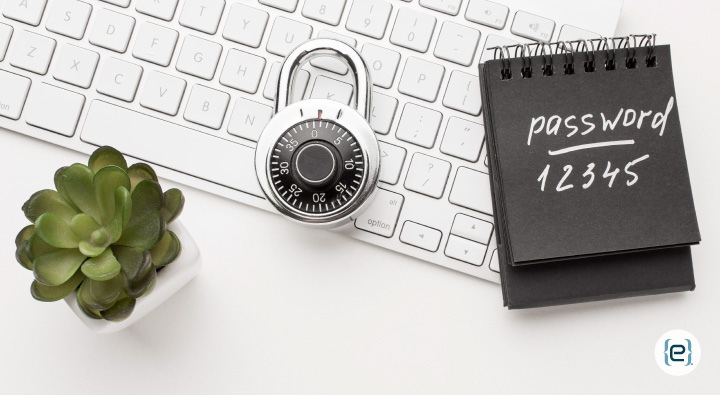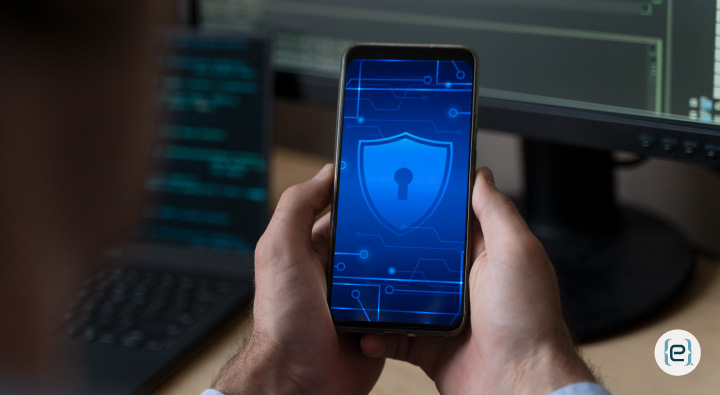A Secure Alternative to Passwords


You probably know that passwords are important for Cyber Security. They should be unique, long, and complex, with a mix of letters, numbers, and symbols to be secure, and you should not reuse a single password across accounts
In theory, this means users must remember many passwords, each with at least 26 characters, for different accounts. In practice, of course, that just does not work.
To cope, many people use easy-to-remember passwords like “Password” or “12345,” which Cyber Criminals can easily crack. Users often make the mistake of using the same password for multiple accounts, including sensitive ones like online banking. This can help hackers get into all their accounts, with bad results for the victim.
But trained Cyber Security professionals from eMazzanti can design secure, easy-to-use, integrated password solutions. Our password managers can make strong passwords and save them in a secure digital vault for your company.
Single Sign-On (SSO) lets you use one password to access all your other passwords for different websites or services. This means you only have to remember one password, simplifying the process of logging into different accounts.


Layers of Security
To further protect your sensitive data, you can pair an SSO deployment with Multi-Factor Authentication (MFA). MFA needs more than just a password, like a code sent to email or answering a secret question for users. This multi-step login process helps prevent unauthorized access even if someone has compromised a system password.
Some emerging technologies and approaches may supplement or even bypass passwords entirely. Risk-Based Authentication (RBA) is a method commonly used for credit card transactions. It looks at risk factors during authentication to help administrators change requirements as needed. RBA analyzes user behavior and account patterns. For instance, if a small-business owner always uses a specific ATM, using one in another state might trigger additional authentication challenges. So if the risk is low, the process simplifies, but if the risk is high, additional steps may be necessary.
RBA can also issue alerts: if someone tries to use a business credit card fraudulently, RBA alerts will tell the real user and stop the transaction. These kinds of dynamic adjustments provide enhanced security compared to traditional approaches.
Another robust Cyber Security solution is Attribute-Based Access Control (ABAC), which restricts access based on user attributes, data objects, environment, and user purpose. For example, only specific employees in certain departments can access a company’s HR-Payroll system under ABAC, providing a multidimensional approach to data security, and significantly enhancing protection against unauthorized access.
These and other cybersecurity measures are increasingly necessary, especially with the growing adoption of remote work. Flexible work hours allow sharing business devices with family or others, which increases security risks since employees use company resources on different networks, some secure and some not. This expanded access presents more opportunities for hackers to penetrate systems.
Passwords have traditionally been the cornerstone of online security, but they are no longer sufficient on their own. When you partner with eMazzanti to implement new technologies and practices, you will enhance your cybersecurity. This will help create a safer digital environment for both your company and your clients.
Recent Posts
Empower Your Tech
Discover how eMazzanti empowers clients with tech strategies, personalized training, and proactive support to navigate…
The Impact of GDPR and Other Privacy Regulations on Website Security
Explore how GDPR and other privacy regulations reshape website security, ensuring data protection and building…
The Impact of Website Downtime on Business and How to Prevent It
Discover the significant impacts of website downtime on your business and learn effective strategies to…
IT Consulting Services: Strategic IT Leadership for Business Growth
Discover how IT Consulting Services from eMazzanti Technologies provide the strategic leadership needed for smart…
Engage Your Workflows with Microsoft Viva
Discover how Microsoft Viva can transform your workplace into a hub of engagement, productivity, and…
Collaboration Made Simple with Microsoft SharePoint
Discover how Microsoft SharePoint optimizes document workflow, enhancing team collaboration and productivity.


